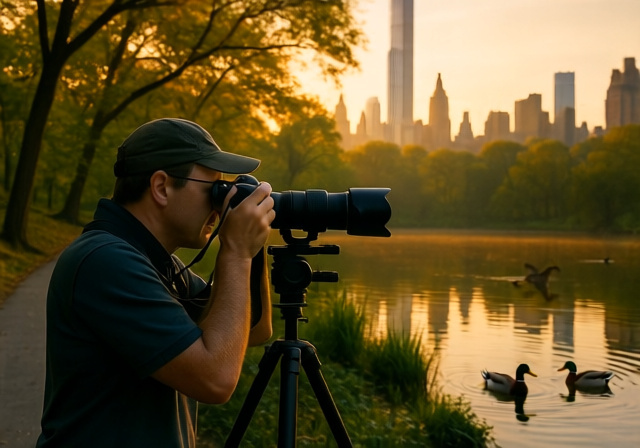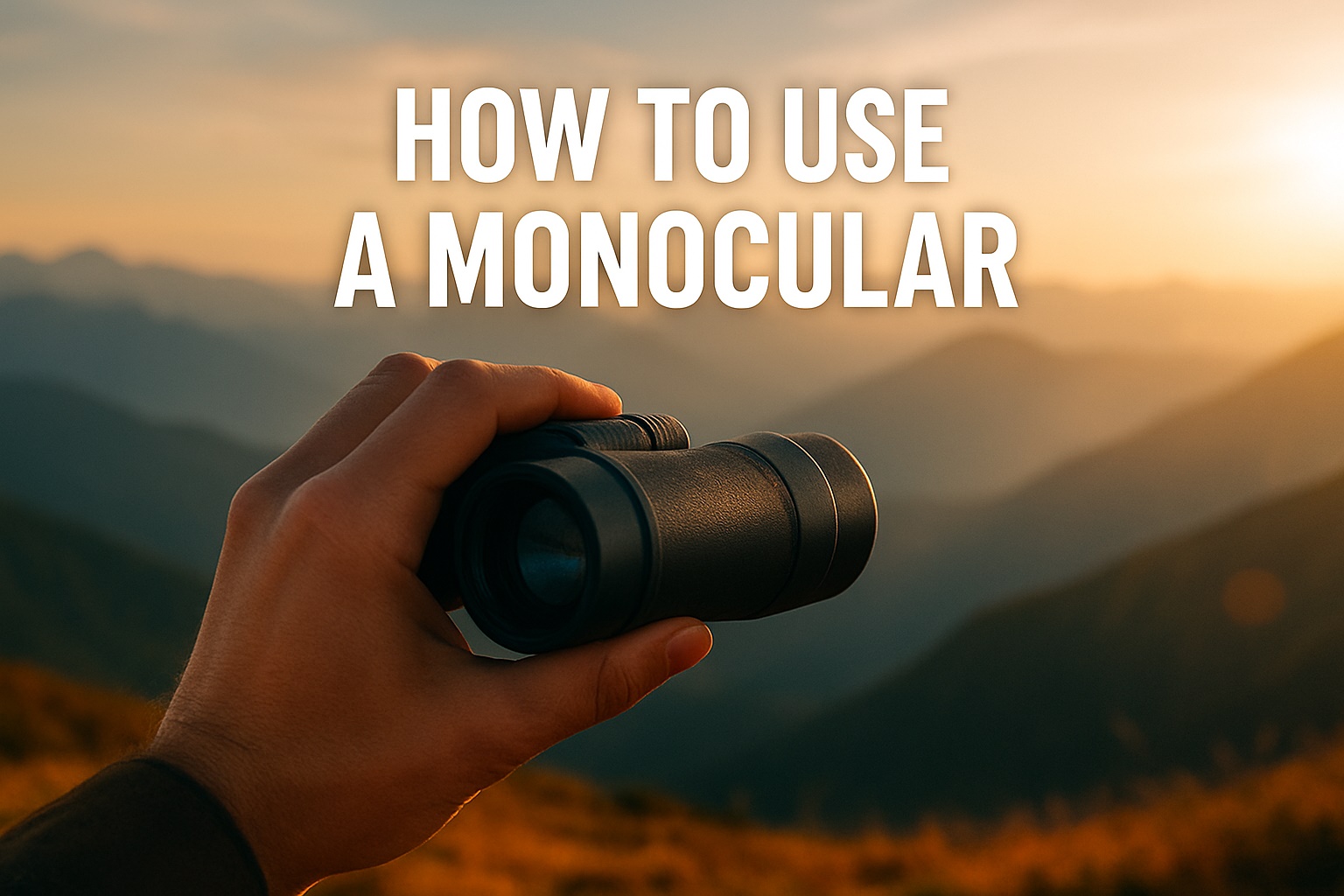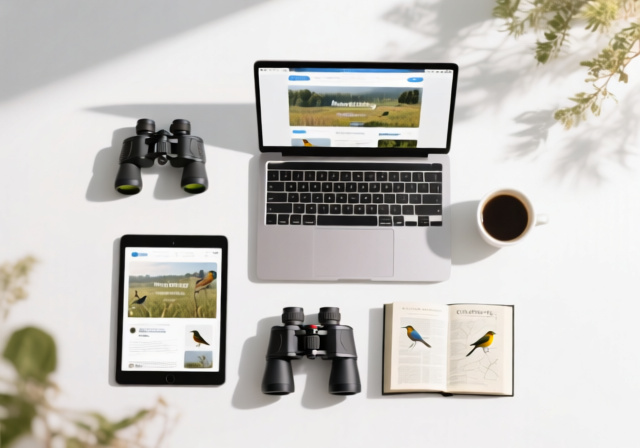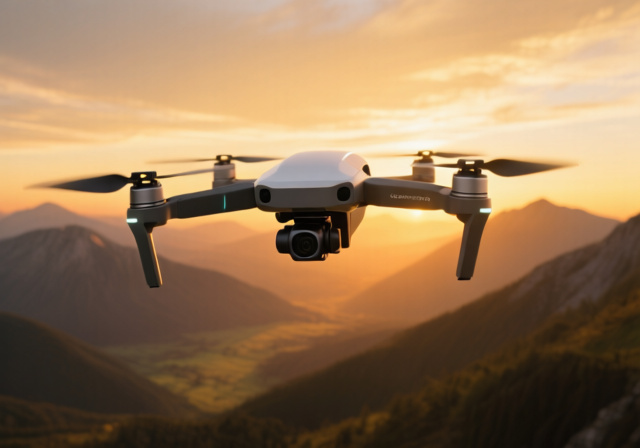



Learning how to use a monocular properly transforms this compact optical device into a powerful viewing tool. Whether you’re watching wildlife, attending sporting events, or exploring distant landscapes, mastering monocular techniques ensures you get the clearest, most stable views possible.
I’ve spent years teaching optics enthusiasts the proper way to handle monoculars, and I’ve noticed most people struggle with the same basic issues: shaky images, difficulty focusing, and eye fatigue. The good news? Once you understand the fundamentals and practice the right techniques, using a monocular becomes second nature.
This comprehensive guide walks you through everything from initial setup to advanced viewing techniques. We’ll cover proper holding positions, focusing methods, and troubleshooting common problems. By the end, you’ll have the knowledge and confidence to use your monocular like a seasoned observer.
Before diving into usage techniques, let’s identify the key parts of your monocular. Every monocular consists of an objective lens (the larger lens at the front), an eyepiece (where you look through), a focus wheel or ring (usually in the center), and the main body housing the prism system.
The numbers on your monocular tell an important story. A marking like “10×42” means 10x magnification with a 42mm objective lens diameter. Higher magnification brings objects closer but reduces field of view and makes hand-holding more challenging. The objective lens size determines how much light enters, affecting brightness and clarity, especially in low-light conditions.
Most monoculars feature either a roof prism or Porro prism design. Roof prisms create a straight, compact body ideal for portability. Porro prisms have an offset design that’s bulkier but often provides slightly better depth perception. Understanding your monocular’s design helps you anticipate its handling characteristics.
Modern monoculars include various coatings on their lenses. Fully multi-coated optics reduce glare and improve light transmission, resulting in brighter, clearer images. Some models also feature rubber armor for grip and protection, twist-up eyecups for glasses wearers, and waterproofing for outdoor use.
Start by removing your monocular from its case and checking all lens caps are removed. Many beginners forget to remove the objective lens cap, wondering why they see nothing but darkness. Store these caps safely in your pocket or bag – you’ll need them later for protection.
Clean your lenses before first use. Use a lens cleaning pen or microfiber cloth, never your shirt or tissues which can scratch the coating. Breathe gently on the lens to create condensation, then wipe in circular motions from center to edge. For stubborn spots, use lens cleaning solution sparingly.
Adjust the eyecup for your viewing preference. If you wear glasses, twist or fold down the eyecup to maintain proper eye relief – the distance between your eye and the eyepiece. Without glasses, extend the eyecup fully. This positioning prevents black rings around your view (vignetting) and maximizes your field of view.
Attach the neck strap or wrist strap immediately. I’ve seen too many monoculars dropped during the excitement of spotting something interesting. Thread the strap through the designated loops and adjust the length so the monocular hangs at chest level when not in use.
The single biggest challenge with monocular use is achieving a stable image. Unlike binoculars vs monoculars, which distribute weight across both hands, a monocular requires specific techniques to minimize shake.
The basic grip involves wrapping your fingers around the monocular body with your index finger resting on top near the focus wheel. Your thumb supports from below, creating a stable three-point contact. Keep your palm slightly cupped rather than gripping tightly – tension creates tremors that magnify through the optics.
Brace your holding hand against your face for additional stability. Rest the edge of your hand against your cheekbone or temple. This creates a connection between the monocular and your head, reducing independent movement. Some users prefer resting their thumb against their nose for extra support.
Your non-viewing eye plays a crucial role in comfort and stability. Keep both eyes open initially – this reduces eye strain and helps maintain spatial awareness. Once you’ve located your target, you can close the non-viewing eye for more concentrated observation, though many experienced users keep both eyes open continuously.
For extended viewing sessions, use environmental supports. Lean against a tree, wall, or vehicle. Rest your elbows on a railing, rock, or your knees when seated. These contact points dramatically improve stability, especially at higher magnifications where every tiny movement becomes amplified.
Focusing seems simple but requires proper technique for optimal results. Start by pointing your monocular at a distant object – something at least 50 feet away works well for initial focusing. This gives you a baseline focus that’s easier to refine than starting with close objects.
Look through the eyepiece and slowly turn the focus wheel. Most monoculars focus by rotating clockwise for distant objects and counterclockwise for closer ones, though some models work oppositely. Turn slowly and deliberately – rapid spinning makes it easy to pass through the sharp focus point without noticing.
Focus on high-contrast edges for best results. The line where a building meets the sky, tree branches against clouds, or text on distant signs provide clear reference points. These sharp transitions make it obvious when you’ve achieved optimal focus.
Fine-tune your focus by slightly overshooting the point of clarity, then backing off. This “bracketing” technique helps you find the exact sweet spot. Once you think you have perfect focus, look away briefly, then look back. Your eye sometimes compensates for slight focus issues, and this reset reveals whether adjustment is still needed.
Remember that focus changes with distance. If you’re tracking a moving subject or switching between targets at different ranges, you’ll need to refocus. Develop muscle memory for your focus wheel’s movement – with practice, you’ll instinctively know how much rotation moves between common viewing distances.
Once you’ve mastered basic operation, advanced techniques enhance your viewing experience. The “anchor and pivot” method works excellently for scanning large areas. Plant your elbows firmly and pivot at the waist, keeping the monocular steady relative to your head. This creates smooth, controlled movement across the landscape.
For tracking moving subjects like birds or vehicles, use predictive positioning. Instead of chasing the subject, anticipate its path and position your monocular where it’s heading. Let the subject move into your field of view rather than constantly adjusting. This reduces fatigue and provides steadier observation.
Learn to use reference points for quick target acquisition. If you spot something with your naked eye, note nearby landmarks like distinctive trees or buildings. Find these landmarks through the monocular first, then navigate to your target. This method is faster than randomly searching through the magnified view.
Master the “quick draw” technique for spontaneous wildlife viewing. Practice bringing the monocular to your eye in one smooth motion while maintaining focus on your target. Start with the monocular at chest level, raise it directly to your viewing eye while keeping both eyes open and focused on the subject. With practice, you’ll center targets immediately without searching.
In low light conditions, maximize your monocular’s capabilities by allowing your eyes to adjust to darkness for at least 10 minutes before viewing. Use your monocular’s maximum exit pupil by focusing on the brightest part of your subject first, then exploring darker areas. Avoid looking at bright lights which reset your night vision.
Different activities require adapted techniques. For bird watching, minimize movement and noise. Support your monocular against a tree or use a monopod for extended observation. Focus on perches and feeding areas where birds pause, rather than trying to track them in flight.
At sporting events or concerts, consider your neighbors. The compact size of a monocular compared to a monocular vs spotting scope makes it less obtrusive, but avoid blocking others’ views. Use quick observations rather than prolonged viewing, and share interesting moments with those around you.
For astronomy, monoculars offer a wide field perfect for constellation viewing and bright objects like the Moon. Use a tripod adapter if available, as any shake is magnified when viewing celestial objects. Start with the Moon for practice – its brightness and size make it an ideal first target.
During hiking or nature observation, protect your monocular from impacts and moisture. Keep it inside your jacket in rain or snow, bringing it out only for actual viewing. In dusty conditions, use lens caps between observations. Temperature changes can cause internal fogging, so allow your monocular to acclimate when moving between environments.
For surveillance or security applications, remain inconspicuous by using natural viewing positions. Avoid pointing directly at subjects for extended periods. Instead, observe peripherally and use quick, purposeful looks. Remember that in many jurisdictions, privacy laws restrict observation of private property.
Shaky images plague most beginners. Beyond improving your holding technique, consider your magnification choice. A 10x monocular shows significantly more shake than an 8x model. If stability remains problematic, invest in a mini tripod or monopod designed for monoculars.
Double images or inability to merge the view usually stem from incorrect eye placement. Ensure you’re looking straight through the eyepiece, not at an angle. Adjust the eyecup position and practice finding the “sweet spot” where the entire field of view appears clearly without dark edges.
Eye fatigue develops from prolonged single-eye viewing. Take regular breaks every 10-15 minutes, switching eyes if comfortable. Practice using your non-dominant eye occasionally – this balance reduces strain and develops ambidextrous viewing skills useful when your dominant eye tires.
Fogging occurs from temperature differentials or humidity. External fogging wipes away easily, but internal fogging requires patience. Never disassemble your monocular to clear internal fog. Instead, place it in a warm, dry environment and wait for moisture to evaporate naturally. Prevent fogging by storing your monocular in a climate-controlled space when possible.
Difficulty focusing might indicate you’re too close to your subject. Every monocular has a minimum focusing distance, typically 6-15 feet. Check your manual for specifications. If distant objects won’t focus sharply, your monocular might need collimation adjustment by a professional.
Proper maintenance extends your monocular’s lifespan significantly. After each use, brush away debris with a soft lens brush before wiping. This prevents scratching from dragging particles across the lens surface. Pay special attention to the focus wheel mechanism, where dirt accumulation affects smooth operation.
Store your monocular in its case with silica gel packets to prevent moisture buildup. Even waterproof models benefit from dry storage. Replace lens caps after each use, but ensure lenses are completely dry first – trapping moisture under caps promotes fungus growth.
Perform monthly deep cleaning if you use your monocular regularly. Clean the body with a slightly damp cloth, avoiding excessive moisture near openings. Lubricate the focus mechanism annually with a tiny drop of lightweight oil, but only if recommended by your manufacturer.
Check and tighten screws periodically, especially on frequently used monoculars. Vibration from transport loosens components over time. Mark correct positions with a pencil before tightening, maintaining factory alignment. Never over-tighten, which strips threads or cracks plastic components.
Professional servicing every few years maintains optimal performance. Technicians check internal alignment, clean interior elements, and replace worn seals. This investment preserves image quality and prevents costly damage from accumulated wear.
Compact monoculars under 8x magnification excel at handheld use. Their wide field of view and minimal shake make them perfect for quick observations. Hold these models with a light grip, using your pinky finger as a stabilizing point beneath the body.
High-power monoculars (12x and above) demand superior stabilization. These benefit most from supported positions or mounting systems. When handheld use is necessary, practice breathing control – exhale partially and hold your breath momentarily while viewing, similar to rifle shooting techniques.
Night vision monoculars require different handling entirely. The electronic intensification means any bright light can damage the unit or your vision. Always use lens caps in daylight, and practice operating controls in darkness. The weight distribution differs from optical monoculars, requiring adjusted grip positions.
Zoom monoculars add complexity with variable magnification. Start observations at the lowest magnification for easier target acquisition, then zoom in once centered. Remember that image quality typically decreases at maximum zoom, so use only as much magnification as necessary for clear observation.
Rangefinder monoculars combine optics with distance measurement. These heavier units benefit from two-handed operation when using ranging functions. Steady the unit completely before activating the rangefinder, as movement affects accuracy. Practice estimating distances visually to verify rangefinder readings.
Never look directly at the sun through your monocular, even with solar filters unless specifically designed for solar observation. The concentrated light can cause permanent eye damage instantly. Similarly, avoid using your monocular near welding, lasers, or other intense light sources.
Be aware of your surroundings while viewing. The magnified view eliminates peripheral vision, making you vulnerable to hazards. When walking with a monocular, lower it frequently to check your path. Never use a monocular while driving or operating machinery.
Respect privacy and wildlife. Observe public spaces and wildlife from respectful distances. Many areas prohibit optical devices near sensitive locations. When observing wildlife, maintain recommended distances to avoid disturbing natural behaviors or creating dangerous situations.
Protect your monocular from theft by being discrete in public spaces. Avoid displaying expensive optics unnecessarily. Use a generic case rather than branded ones that advertise value. Register your serial number and photograph your monocular for insurance purposes.
Consider weather conditions before viewing. Rain and snow not only affect visibility but can damage non-waterproof models. High winds make stable viewing nearly impossible at high magnifications. Extreme temperatures affect battery-powered features and can cause temporary internal fogging.
Successful monocular use extends beyond technical operation to developing observation skills. Practice systematic scanning patterns, moving in overlapping grids to ensure complete coverage of an area. This methodical approach reveals subjects you might otherwise miss.
Learn to identify subjects by shape and movement patterns before magnifying. Birds have distinctive flight patterns, mammals characteristic gaits. This pre-identification helps you anticipate behavior and position your monocular appropriately.
Keep an observation journal noting viewing conditions, techniques used, and subjects observed. Review these notes to identify patterns in your success. You might discover certain positions or times yield better results, informing future viewing sessions.
Practice estimating sizes and distances without your monocular, then verify with observation. This develops spatial awareness crucial for quick target acquisition. Use known references like vehicles or buildings to gauge unfamiliar subjects’ dimensions.
Join local birding or astronomy groups to learn from experienced observers. They share techniques specific to your area and interests. Group outings provide opportunities to try different monocular models and compare viewing techniques.
Understanding when to choose a monocular over alternatives improves your viewing success. While researching options, many people explore spotting scope guides for comparison. Monoculars excel in portability and quick deployment where binoculars or spotting scopes prove cumbersome.
Monoculars offer advantages for users with vision differences between eyes. Unlike binoculars requiring balanced adjustment, monoculars accommodate single-eye viewing naturally. They’re also ideal for users with mobility limitations who struggle managing larger optics.
The learning curve for monoculars is generally shorter than telescopes but requires more practice than binoculars for stability. However, once mastered, the quick deployment and minimal storage requirements make monoculars perfect for spontaneous viewing opportunities.
Cost considerations often favor monoculars for casual users. A quality monocular costs less than equivalent binoculars since you’re buying half the optical system. This makes monoculars excellent entry points into nature observation or astronomy.
Use your dominant eye for clearest viewing. To find your dominant eye, make a triangle with your hands at arm’s length and center a distant object. Close one eye at a time – your dominant eye keeps the object centered. Most people prefer their dominant eye, but you can train either eye with practice.
Yes, absolutely. Fold down or retract the rubber eyecup to accommodate your glasses. This maintains proper eye relief distance. Some users prefer removing glasses if they’re only correcting for distance, as the monocular’s focus adjustment compensates. Experiment to find your preference.
Stabilize through proper holding technique and body support. Brace against solid objects when possible. Lower magnification models show less shake. Practice breathing control and consider a monopod for extended viewing. Image stabilized monoculars exist but cost significantly more.
Fogging occurs from temperature differences between the monocular and environment. Allow 10-15 minutes for temperature equalization when moving between environments. Store with silica gel packets to reduce internal moisture. Never wipe internal fog – let it evaporate naturally.
Start with 8x or 10x magnification. These provide good detail while remaining stable handheld. Higher magnifications require steadier hands or support systems. Consider your primary use – 8x works great for sports and theater, while 10x better serves nature observation.
Minimum focus distance varies by model, typically 6-15 feet. Check your specifications. Some macro-capable monoculars focus as close as 12 inches but sacrifice long-distance performance. Standard monoculars aren’t designed for reading or close work.
Initially, yes. Keeping both eyes open reduces strain and maintains peripheral awareness. With practice, you can switch between both-eyes-open for searching and single-eye for detailed observation. Do what feels comfortable for your situation.
Use lens cleaning tools specifically designed for optics. Brush away debris first, then use lens tissue or microfiber cloths with appropriate cleaning solution. Clean in circular motions from center outward. Never use paper towels, tissues, or clothing which can scratch coatings.
Proficient monocular use combines technical knowledge with practiced technique. From basic holding positions to advanced observation methods, each skill builds upon previous learning. Regular practice develops muscle memory, making operation intuitive rather than conscious.
Remember that perfect technique develops over time. Start with fundamental stability and focusing, then gradually incorporate advanced methods. Don’t get frustrated if images shake initially – everyone experiences this learning curve. Focus on incremental improvement rather than immediate perfection.
Your monocular opens windows to distant worlds, from wildlife behavior to celestial wonders. The compact size means it’s always available for unexpected viewing opportunities. Whether you’re hiking mountain trails or attending outdoor events, proper technique ensures you capture every important moment clearly.
Keep practicing the techniques covered in this guide, adapting them to your specific needs and preferences. Join online forums or local clubs to share experiences and learn new approaches. With dedication and proper technique, your monocular becomes an extension of your natural vision, revealing details invisible to the naked eye.
Most importantly, enjoy the journey of discovery. Each viewing session offers opportunities to refine technique and observe something new. The investment in learning proper monocular use pays dividends through years of enhanced observation experiences, connecting you more deeply with the world around you.







